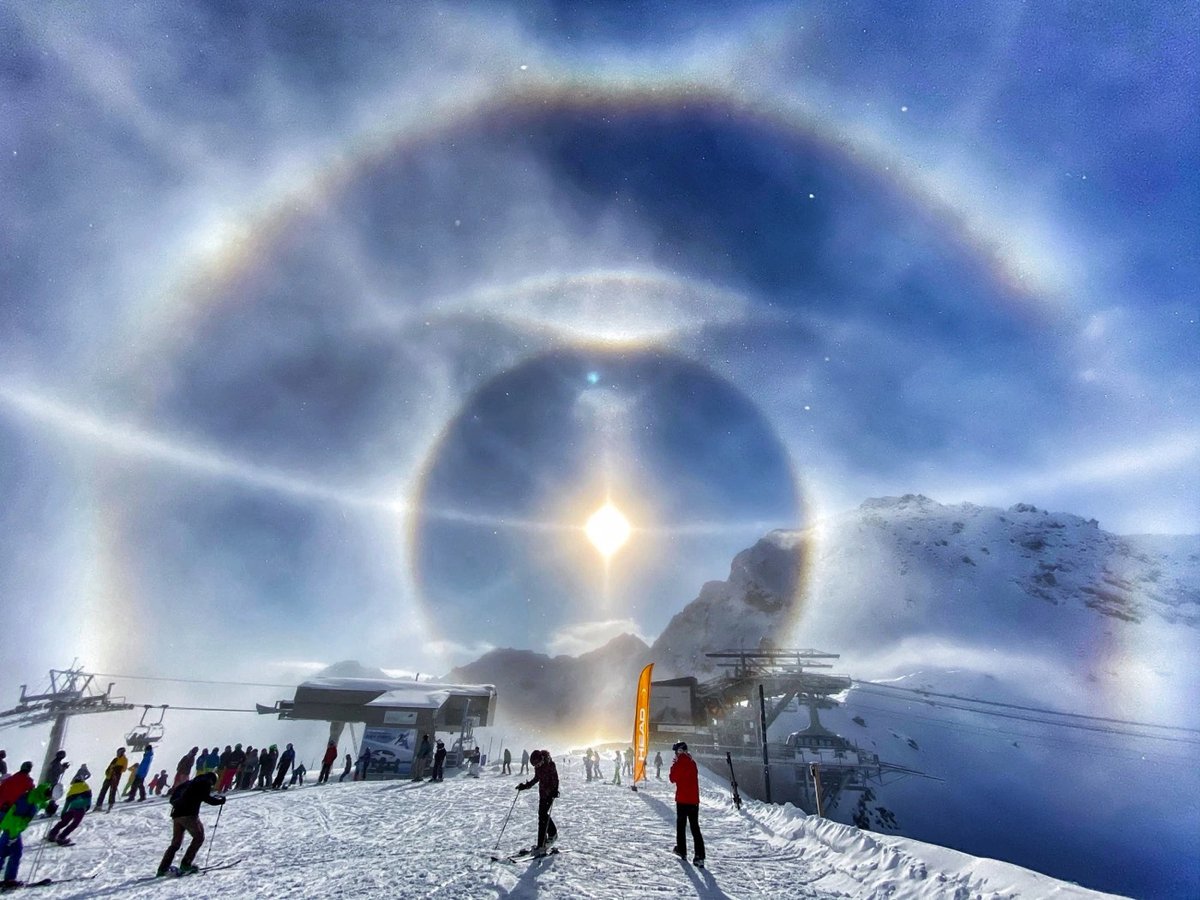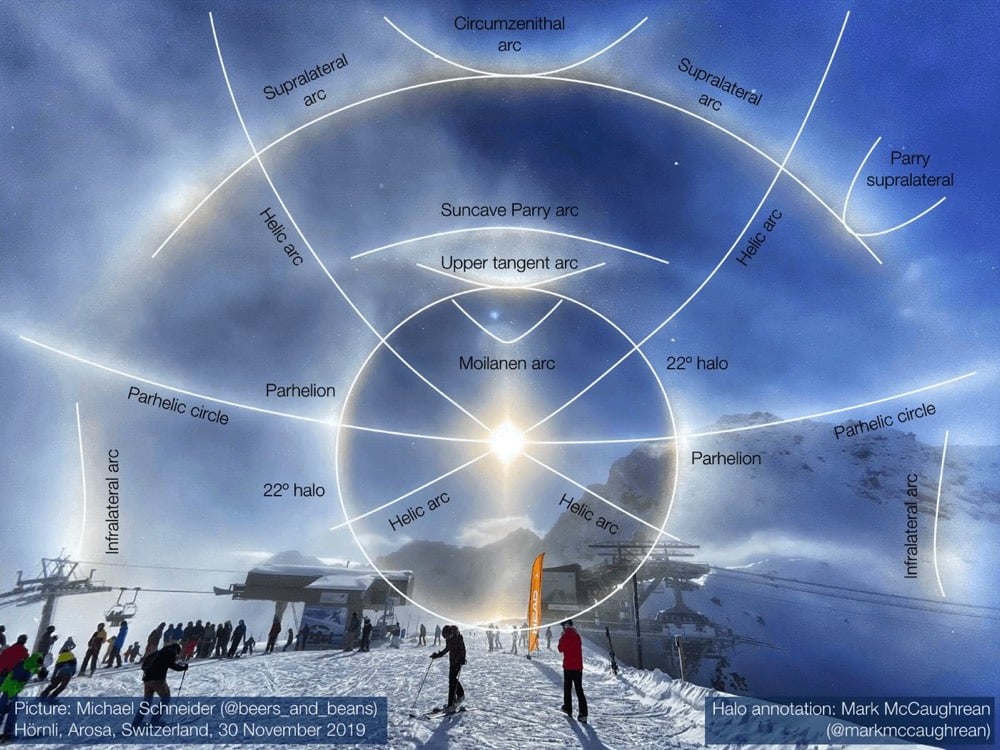Incredible Display of Ice Crystal Halos Around the Sun in the Swiss Alps

This is a photo of several ice crystal halos around the Sun taken by Michael Schneider in the Swiss Alps with an iPhone 11 Pro. It. Is. Absolutely. Stunning. I can barely write more than a few words here without stealing another peek at it. According to Schneider’s post (translated from German by Google), this display developed gradually as he waited for a friend as some icy fog and/or clouds were dissipating at the top of a Swiss ski resort and he was happy to capture it on his new phone.
Using this site on atmospheric optics, Mark McCaughrean helpfully annotated Schneider’s photo to identify all of the various halos on display:

Displays like this are pretty rare, but Joshua Thomas captured a similar scene in New Mexico a few years ago and Gizmodo’s Mika McKinnon explained what was going on.
Ice halos happen when tiny crystals of ice are suspended in the sky. The crystals can be high up in cirrus clouds, or closer to the ground as diamond dust or ice fog. Like raindrops scatter light into rainbows, the crystals of ice can reflect and refract light, acting as mirrors or prisms depending on the shape of the crystal and the incident angle of the light. While the lower down ice only happens in cold climates, circus clouds are so high they’re freezing cold any time, anywhere in the world, so even people in the tropics mid-summer have a chance of seeing some of these phenomena.
Explaining the optics of these phenomena involves a lot of discussing angular distances.
So so so so cool.





Stay Connected